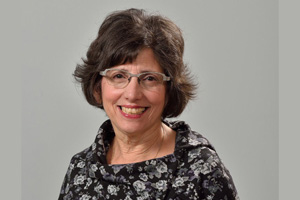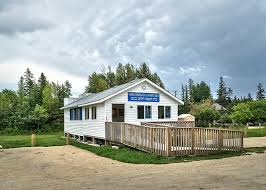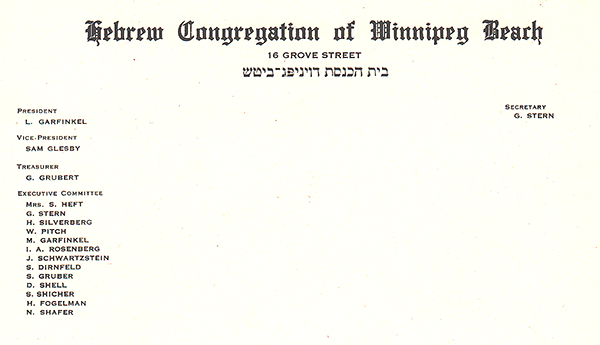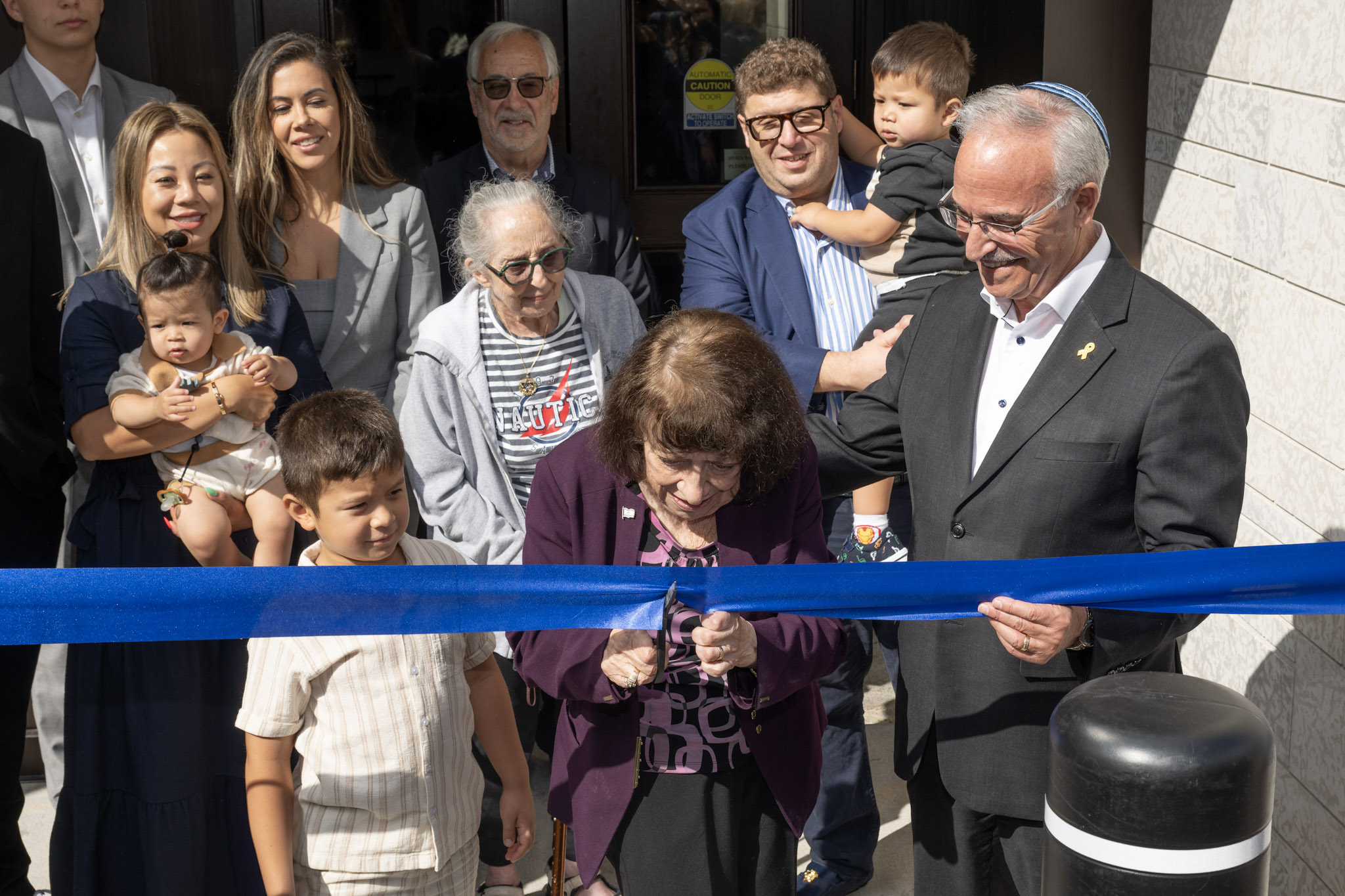Local News
World-renowned geneticist Dr. Cheryl Greenberg charged with developing new Prairie provinces diagnostic partnership

By MYRON LOVE The Federal Government, in the person of The Honourable François-Philippe Champagne, Minister of Innovation, Science and Industry, recently announced funding for the creation of a Canadian Prairie Metabolic Network (CPMN), linking genetic researchers in Winnipeg, Saskatoon, Edmonton and Calgary. One of the individuals chosen to lead the project is internationally-known pediatric geneticist Dr. Cheryl Rockman-Greenberg.
“I am honoured to have been given this new responsibility,” notes Rockman-Greenberg, a longstanding academic clinician and member of our Jewish community for more than 40 years. “I am very excited to be part of this project,” she says. “We believe that through this clinical network we will demonstrate that a “genomics first” diagnostic approach when considering a hereditary metabolic disorder will greatly enhance the timely care and outcomes for our patients in Manitoba, Saskatchewan and Alberta.”
She reports that she and her colleagues – including those at partner organizations Shared Health Manitoba, Genome Prairie – a non-profit organization that supports stakeholders across Manitoba and Saskatchewan -, Discovery DNA, a genetics company based in Calgary which will provide diagnostic services, and Genome Alberta – first learned that they had received the grant in February although the formal announcement was delivered in early March.
Rockman-Greenberg is originally from Montreal. She received her medical degree at McGill. In Winnipeg, she wears several hats – as a research scientist at the Children’s Hospital Research Institute of Manitoba, Distinguished Professor in both the Department of Pediatrics and Child Health and the Department of Biochemistry and Medical Genetics at the University of Manitoba’s Max Rady College of Medicine. In her research she has identified the molecular source of some of Manitoba’s most devastating inherited diseases. As noted in her University of Manitoba biography, much of her research has involved newborn screening, which allows for pre-symptomatic detection of metabolic genetic disorders that are amenable to effective treatment, if detected before symptoms appear.
She points out that the CPMN is the fifth regional All-for-One precision health partnership – making the program pan-Canadian, spanning coast-to-coast. The goal of the health partnerships is to improve the health and wellness of Canadians with serious genetic conditions by enabling access to a timely and accurate genomic-based diagnosis.
“There is a lot of work to be done,” says Rockman-Greenberg of the establishment of the new initiative. The paperwork still has to be completed. Then, we will set up in Winnipeg first before linking up with our colleagues in Saskatoon, Edmonton and Calgary.”
The government statement concerning the creation of CPMN points out that more than 6,000 patients in the Prairies, primarily children, are affected by inborn errors of metabolism (IEM), rare genetic diseases caused by mutations in either the nuclear or mitochondrial genome. “Throughout the Prairie provinces,” the statement observes, “there is a limited local capacity for next-generation sequencing, causing delays which limit the benefits of early diagnosis, early treatment and improved outcomes. These delays result in adverse outcomes in patients. The CPMN aims to ensure the timely and more cost-effective delivery of innovative and relevant genomic testing in the Prairies, including rapid, inexpensive mitochondrial DNA testing not available elsewhere.”
“We hope by combining our resources that we will be able to offer faster and more accurate diagnoses and better access to new treatments,” Rockman-Greenberg says.
Local News
Thank you to the community from the Chesed Shel Emes

We’re delighted to share a major milestone in our Capital Campaign, “Building on our Tradition.” Launched in November 2018, this campaign aimed to replace our outdated facility with a modern space tailored to our unique needs. Our new building is designed with ritual at its core, featuring ample preparation space, Shomer space, and storage, creating a warm and welcoming environment for our community during times of need.
We’re grateful to the nearly 1,000 generous donors who contributed over $4 million towards our new facility. A $750,000 mortgage will be retired in November 2025, completing this monumental project in just seven years.
We’re also thrilled to announce that our Chesed Shel Emes Endowment Fund has grown tenfold, from $15,000 to $150,000, thanks to you, the Jewish Foundation of Manitoba’s FundMatch program, and Million Dollar Match initiative in 2024. Our fund helps ensure that everyone can have a dignified Jewish funeral regardless of financial need.
As we look to the future, our goal remains to ensure the Chevra Kadisha continues to serve our community for generations to come. Our focus now shifts to replenishing our savings account and growing our JFM Endowment fund.
We’re deeply grateful for your support over the past several years.
It’s our privilege to serve our community with care and compassion.
With sincere appreciation,
Campaign cabinet: Hillel Kravetsky, Gerry Pritchard, Stuart Pudavick,
Jack Solomon, and Rena Boroditsky
Murray S. Greenfield, President
Local News
Winnipeg Beach Synagogue about to celebrate 75th anniversary

By BERNIE BELLAN (July 13) In 1950 a group of cottage owners at Winnipeg Beach took it upon themselves to relocate a one-room schoolhouse that was in the Beausejour area to Winnipeg Beach where it became the beach synagogue at the corner of Hazel and Grove.
There it stayed until 1998 when it was moved to its current location at Camp Massad.
On August 2nd members of the synagogue will be holding a 75th anniversary celebration.

As part of the celebration anyone who is a descendant or relative of any of the original members of the first executive committee (as seen in the photo here) is invited to attend the synagogue that morning.
If you are a relative please contact Abe Borzykowski at wpgbeachshule@shaw.ca or aborzykowski@shaw.ca to let Abe know you might be attending or for more information about the 75th anniversary celebration.
We will soon be publishing a story about the history of the beach synagogue, which is something I’ve been writing about for over 25 years.
Local News
Vickar Family cuts ribbon on new Tova Vickar and Family Childcare Centre

By MYRON LOVE In the words of Larry Vickar, the Shaarey Zedek’s successful Dor V’ Dor Campaign “is not only a renewal of the synagogue but truly a renewal movement of Jewish life in our community.”An integral part of that renewal movement was the creation of a daycare centre within the expanded synagogue. On Monday, June 23, Larry and Tova Vickar cut the ribbon, thereby officially opening the Tova Vickar and Family Childcare Centre in the presence of 100 of their family members, friends and other supporters of the project.
The short program preceding the morning ribbon-cutting began with a continental breakfast followed by a welcome by both Fanny Levy, Shaarey Zedek’s Board President, and Executive Director Dr. Rena Secter Elbaze. In Elbaze’s remarks, she noted that Larry and Tova wanted their family (including son Stephen and family, who flew in from Florida) and friends at the event to celebrate the opening of the Tova Vickar and Family Childcare Centre, “not because of the accolades, but because, as Larry put it, he hopes that their investment in the congregation will inspire others to do the same.”
“When Larry and I spoke about what this gift meant to him and the message he wanted people to take away,” she continued, “I couldn’t help but connect it to the teachings of Reb Zalman Schachter-Shalomi whose book – Age-ing to Sage-ing – changes the whole way we look at the concept of ageing and basing it on our ancestral teachings.”
She explained that his concept of “Sage-ing” is based on three key ideas – Discover your meaning and purpose; accept our mortality and think about the legacy you want to leave.
“Larry spoke about these exact concepts when we met,” she said.
Elbaze also noted the presence of Shaarey Zedek’s newly-arrived senior Rabbi Carnie Rose, former Rabbi Alan Green, and area MLAs Mike Moroz and Carla Compton.
Larry Vickar expressed his great appreciation for all those in attendance. “Tova and I are deeply moved to stand here with you today for this important milestone in our community”, he said. “We are grateful to be surrounded by all of you, the people we care about, our family and friends… you who have touched our lives and played some part in our journey.”
